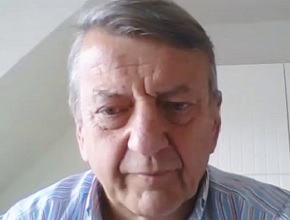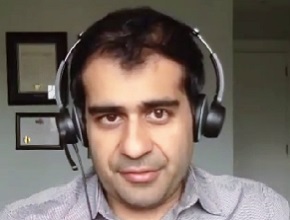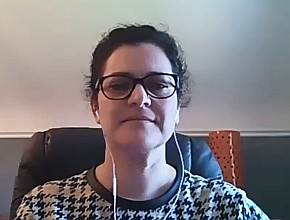Dr Menaka Pai, associate professor of hematology and thromboembolism at McMaster University and co-chair of the Ontario COVID-19 Clinical Practice Guideline Working Group, talks with Dr Roman Jaeschke about anticoagulation and antithrombotic management in hospitalized patients with coronavirus disease (COVID-19).
Roman Jaeschke, MD, MSc: Good afternoon. Welcome to another edition of McMaster Perspective. I have a pleasure to introduce Dr Menaka Pai, who is advising not only me but [all of] us in Ontario on different aspects of COVID-19 treatment, including antithrombotic therapy or prevention. Menaka, in 2 hours I’m starting on-call in the hospital and I will see people with COVID-19, effectively only people with COVID-19. I will see people on mechanical ventilation; on noninvasive ventilation; on high-flow, on low-flow, and probably also on no oxygen. Who should get what? An easy question.
Menaka Pai, MD, MSc: That’s a very hard question. First I’ll tell you—as you now, Dr Jaeschke, I’m a hematologist and thrombosis physician, so I’ve had the benefit working on the Science Table and talking to people far smarter than me: intensivists, respirologists, general internists who are still grappling with this—what we have decided in Ontario, because realistically you have to operationalize things some way. So here’s how we’ve operationalized it. If you are a patient who needs no supplemental oxygen, you are mildly ill; if you are a patient who needs low-flow oxygen, you are moderately ill; and if you are a patient who needs high-flow oxygen, who needs mechanical ventilation, who needs something like extracorporeal membrane oxygenation (ECMO), you are critically ill. Now, we’ve tried to stay away from things like “the intensive-care unit (ICU) patient” or the “ward patient” because, as you know, in this pandemic patients who are very critically ill are getting cared for on the ward because really we don’t have space for them.
So in terms of who gets what we’re trying to use this framework and we certainly believe that dexamethasone and tocilizumab are very, very useful therapies for critically ill patients and also for moderately ill patients. We believe it’s critical to avert inflammation early. Remdesivir is a little trickier. So remdesivir… Where do we use it? We know that it might be effective in patients who are on high-flow oxygen. The evidence is not strong, but we are quite sure that it’s not effective in patients who are on more aggressive forms of ventilation. And then the big question: “Do you want to know my thoughts about anticoagulation?”
Roman Jaeschke: Absolutely.
Menaka Pai: OK, so this one is tough, because it matters not only how ill the patient is but also [what] the quality of the data [is]. Let me tell you what we know. We know that we have adjudicated, peer-reviewed data for therapeutic anticoagulation in critically ill patients and it is not superior to venous thromboembolism (VTE) prophylaxis. So if you’re in the ICU, Dr Jaeschke, don’t give them anything more than VTE prophylaxis for now. There’s a study of intermediate-dose prophylaxis, [the] REMAP-CAP [trial that] is actually comparing low-dose and intermediate-dose [prophylaxis] for the critically ill. That would be important. But therapeutic-dose anticoagulation is a no go. It doesn’t improve patient outcomes. For moderately ill patients things are a little tougher, Dr Jaeschke, because as of today, May 13, when we’re chatting, we actually don’t have adjudicated, published data. What we have is essentially a press release and I know the investigators are working very hard on this, but we don’t have final data. The press release [containing] preliminary, nonadjudicated data suggests that therapeutic-dose anticoagulation might improve organ support–free days, so [it] might prevent your moderately ill patients from getting to the ICU. It might improve survival. But that’s tough. I have a lot of reservations as a guideline methodologist making recommendations with something [for which] I don’t have adjudicated data yet and that’s really tough. I think we have to set to default individualized patient assessment and the art of medicine in this case.
Roman Jaeschke: Well, we’ll apply the art. I think it’s both bad and reassuring that we are not the only ones in the world who do not know and we use our best judgement and both assessment of the risk of bleeding and then anything from a preventive dose to an intermediate dose and, as you said, to a full dose in those people who are sick enough to be in the hospital but not yet on high flows. However artificial this line of division may be, each of these options is actually an option. I have a strong suspicion—or hope—that between May 13 and June 13 we’ll know a little bit more. And in the meantime your answer helps me for tonight, so thank you.
Menaka Pai: Thank you, Dr Jaeschke.
Roman Jaeschke: Thank you, Dr Pai. Take care. Goodbye.
 English
English
 Español
Español
 українська
українська











